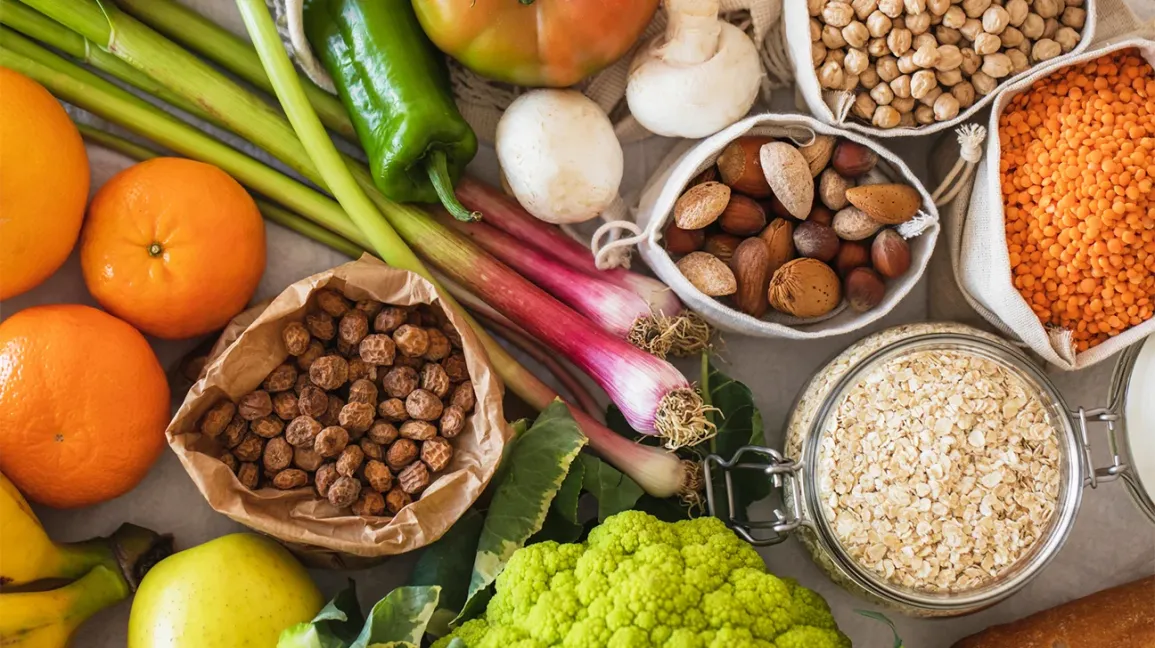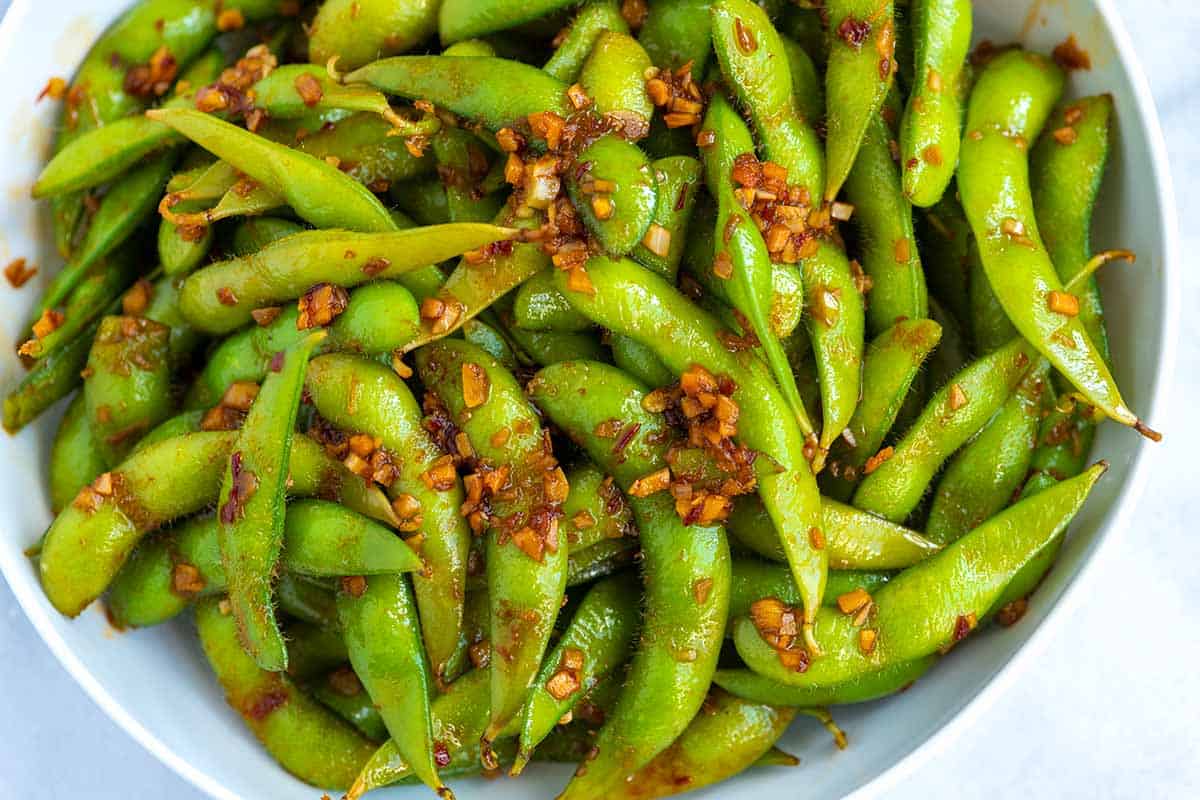Top 7 High Fiber Foods for a Healthy Gut

Eating a diet packed with fiber is a wonderful way to support your digestive system and keep everything operating efficiently. But fiber has many other health benefits, such as preserving your heart, preventing diabetes, and reducing your risk of heart disease, according to the Centers for Disease Control and Prevention.
The U.S. Dietary Guidelines set adequate intake of fiber at 25 grams (g) a day for women ages 31 to 50 and 31 g a day for males of the same age. Most Americans are receiving just half that, with an average intake of 15 g, per Harvard Health Publishing.
Adding fiber to your diet doesn’t have to be challenging. Not only can enhancing your fiber intake be remarkably straightforward but fiber-rich foods are delectable, too. Here are 7 of the finest sources to help you get more fiber in your diet.
Green Peas Up Your Fiber and Provide Essential Vitamins
The veggie may be minuscule, but peas boast an impressive amount of fiber — around 4 g per ½ cup, which is 14 percent of the daily value (DV), per the U.S. Department of Agriculture (USDA). “Tossing in a few handfuls of frozen peas is an easy way to add green veggies to pasta and rice dishes,” says Johannah Sakimura, RD, a contributing health writer for Everyday Health who’s based in Summit, New Jersey. You can also try combining them into dips and condiments for toast and crackers.
In addition to fiber, “peas supply vitamin A, which may help support healthy skin and eyes, and vitamin K, which may help maintain bone strength,” says Sakimura.
Artichokes Are Full of Fiber and Low in Calories

We’re unhappy to report that you probably won’t get loads of fiber from artichoke dip. But you can if you consume the genuine vegetable. Half an artichoke (the edible portion at the bases of the petals) provides 3 g of fiber, which is 11 percent of the DV, per the USDA. You’ll also get only 30 calories if you consume that amount.
If you’ve never cooked an artichoke, fear not — you can still appreciate this veggie and obtain the fiber rewards. While most people aren’t comfortable preparing fresh artichokes, tinned artichoke hearts are simple to cook with and can be used in salads, pasta dishes, and relishes.
And if you’re up for the challenge, try steaming a fresh artichoke with a little olive oil, garlic, and rosemary, or stuffing it with feta and sun-dried tomatoes before roasting it in the oven.
A additional benefit of artichokes? They’re considered a high-potassium vegetable, according to the Academy of Nutrition and Dietetics. When a food is termed “high” in a nutrient, it provides at least 20 percent of the DV.
Avocados Pack Ample Fiber and Heart-Healthy Fats
Avocado aficionados, delight! Here’s an excellent excuse to order avocado toast: Half of one avocado has about 5 g of fiber, and that’s 18 percent of your DV, per the USDA. You’ll also want to embrace the avocado’s lipids. “Most of the fat in avocados is monounsaturated fat, the same heart-healthy kind found in olive oil,” says Jonny Bowden, PhD, of Los Angeles, the author of The 150 Healthiest Foods on Earth.
When you think of avocados, your mind may go straight to guacamole and avocado toast, but there are plenty of other methods to use them. “Avocados are a nutrient-dense, versatile fruit that can be eaten alone or used in a variety of tasty recipes from soups to salad to smoothies,” says Marisa Moore, RDN, the author of The Plant Love Kitchen, who’s based in Atlanta. “I like to add them to smoothies for creaminess and to boost fiber intake,” she adds.
Edamame Makes Filling Up on Fiber Easy and Fun

Having a munchies attack? Instead of opening a bag of crackers, why not reach for edamame? Edamame is a delicious, fiber-rich nibble, boasting about 4 g per ½ cup, which is 14 percent of the DV, per the USDA. “It provides the coveted trifecta of protein, fiber, and healthy fat in one package. Okay, tons of little packages!” says Sakimura.
There are more edamame perks: A research article detailing findings from three past studies concluded that individuals who ate foods with isoflavones, like edamame or tofu, had a moderately reduced risk of developing heart disease.
Enjoy edamame strait from the seed as an afternoon nibble, request them as a side with your sushi or Thai entrée, or put them in grain dishes and salads.
Read Also: Unique Restaurants in Manhattan You Must Try
Beans Are a Versatile, Fiber-Rich Food With Protein and Iron, Too
When people think of high-fiber foods, legumes very likely spring to mind — and for good reason. A ½ cup of cooked navy beans has 9.5 g of fiber, which accounts for 34 percent of the DV, per the USDA.
Black beans, pinto beans, and garbanzos — all part of the pulses family — are fiber-packed, too. “By far, pulses of all kinds are my go-to high-fiber foods,” says Moore. “Black beans are a staple for side dishes, bean burgers, and skillets, and chickpeas are another staple — I love to roast and season them for a crunchy snack,” Moore adds.
Beans are protein-packed and come with iron that can help combat conditions like anemia, according to the Academy of Nutrition and Dietetics. Additionally, one study from 2021 found that consuming 1 cup of tinned legumes decreased total and LDL (“bad”) cholesterol in persons whose LDL was elevated.
Pears Make for the Perfect Fiber-Filled Dessert

Apples tend to take the spotlight as an easy-to-eat fruit staple, but it’s time to start thinking about adding pears to your fruit tray, too. One medium-sized pear has 5.5 g of fiber, which is 20 percent of the recommended DV, per the USDA.
Plus, they’re delectable. “Nibbling on a juicy, ripe pear is a great way to end a meal on a healthy sweet note if you’re trying to avoid high-calorie, sugary desserts,” says Sakimura. In addition to offering loads of fiber, pears are an excellent source of vitamin C, coming in at 7.7 milligrams (mg) for a medium pear, which is about 9 percent of the DV.
Lentils Are a Quick Way to Fill Up on Fiber
If you’re not consuming lentils regularly, it’s time to start. “Lentils are full of fiber,” says Moore. “They supply a spectrum of vitamins and minerals, and they’re a terrific vegetarian source of both protein and iron,” says Sakimura. With more than 7 g of fiber per ½ cup of cooked lentils (for 25 percent of the DV, per the USDA), they’re a wise addition to burritos, sandwiches, and filled peppers.
“I like to include lentils in soups, curries, and salads,” says Moore. “And they cook faster than most other pulses, so they are a great option for newbies — red lentils cook in about 15 minutes, so they are perfect for a weeknight curry, while green and brown lentils add protein and fiber to soups, stews, or rice pilaf,” Moore notes.






.webp)


.webp)



